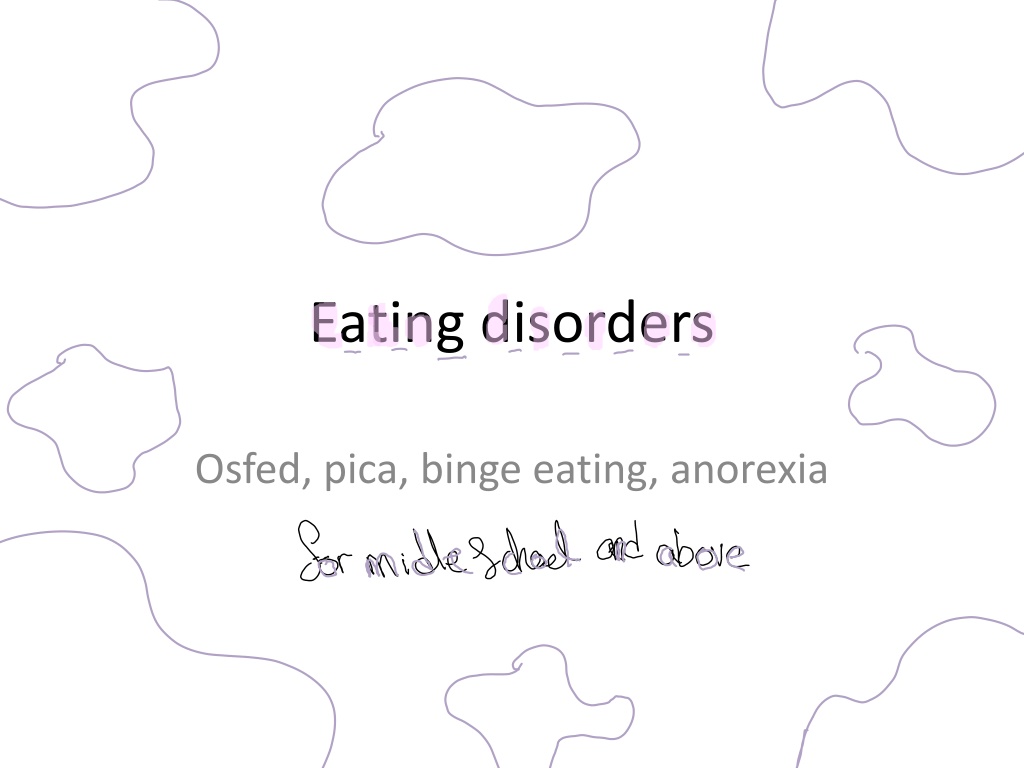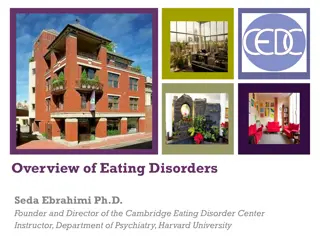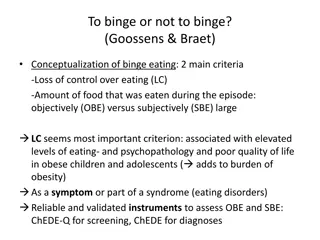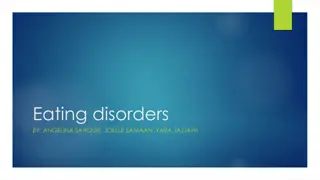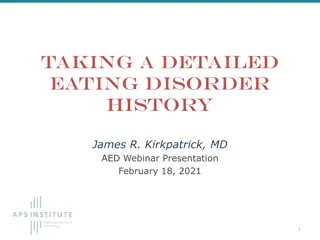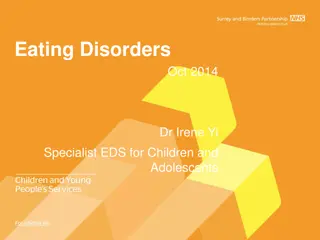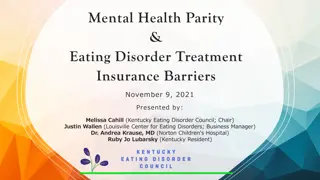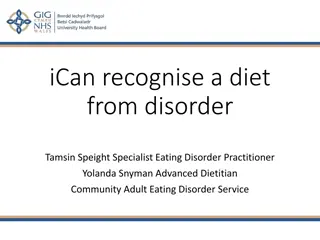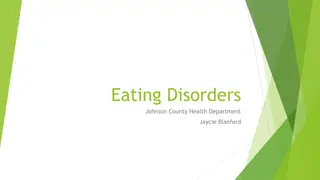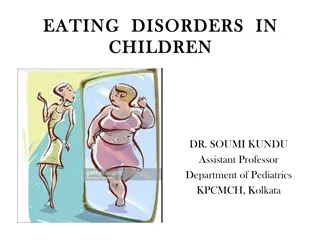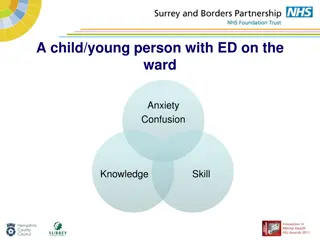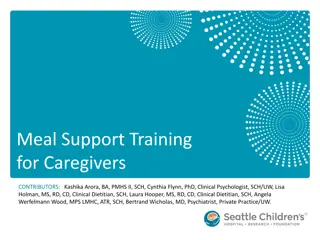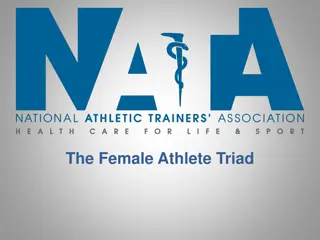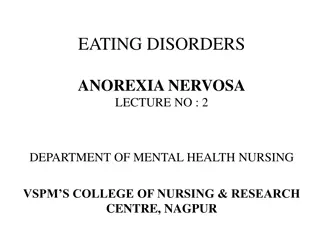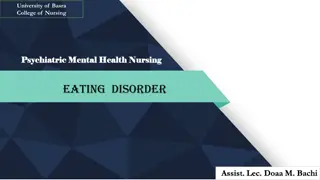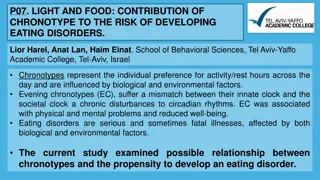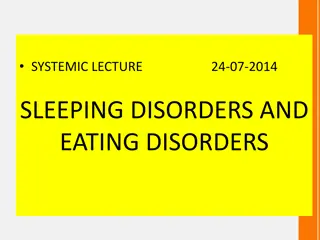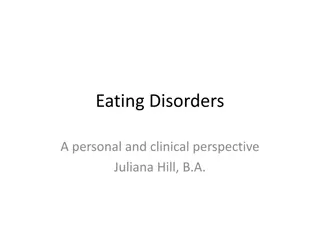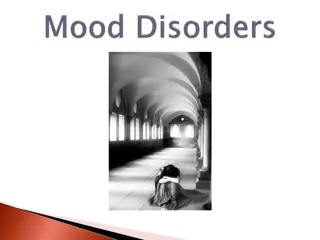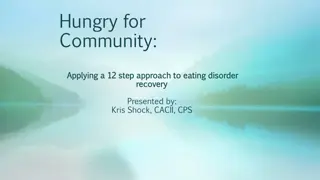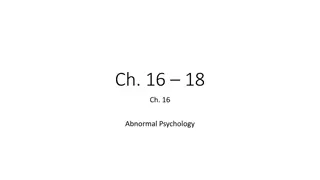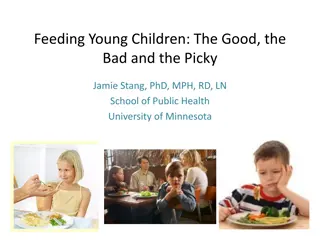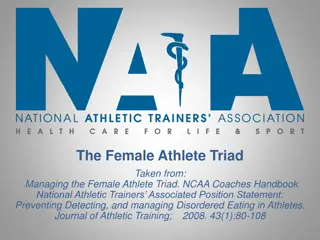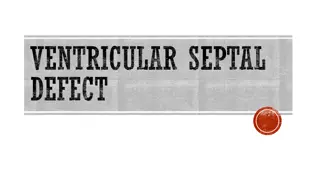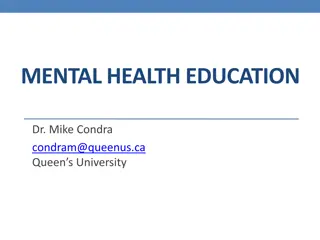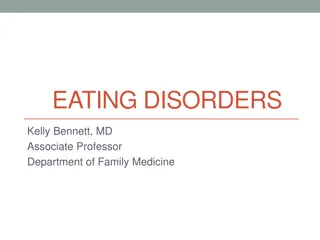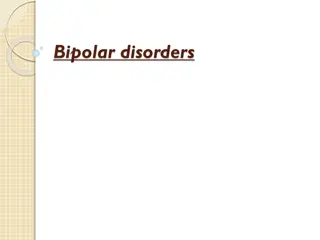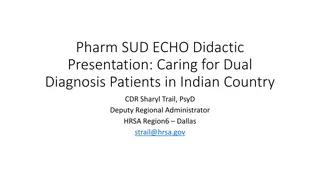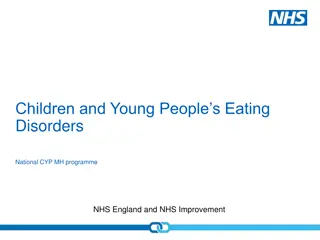Understanding Eating Disorders: Types, Causes, and Treatment Options
Eating disorders such as OSFED, pica, binge eating, and anorexia are significant conditions that impact health, emotions, and daily functions. They are characterized by persistent detrimental eating patterns. Treatment for OSFED is individualized and can include evidence-based therapies. Binge eating disorder involves consuming large amounts of food uncontrollably. It is treatable but can be life-threatening if left untreated.
Download Presentation

Please find below an Image/Link to download the presentation.
The content on the website is provided AS IS for your information and personal use only. It may not be sold, licensed, or shared on other websites without obtaining consent from the author. Download presentation by click this link. If you encounter any issues during the download, it is possible that the publisher has removed the file from their server.
E N D
Presentation Transcript
Eating disorders Osfed, pica, binge eating, anorexia
What are eating disorders in general? Eating disorders are significant conditions caused by persistent eating patterns that have an adverse effect on your health, your emotions, and your capacity to carry out essential life functions. Anorexia nervosa, bulimia nervosa, and binge-eating disorder are the three most prevalent eating disorders.
What is OSFED Other indicated bolstering and eating clutter (Osfed) is an eating clutter classification for those who don't meet the demonstrative criteria for any other eating clutter.
What causes OSFED The reason for creating OSFED will contrast from individual to individual ; known cases incorporate hereditary inclination and a combination of natural, social and social variables. OSFED, like numerous other eating clutters, can be activated by uneasiness call Ma misery, bullying, low self regard, a perfectionananistic identity, and destitute interpersonal relationship attitudes question are all known to contribute to the onset of OSFED ders.
Can OSFED be treated and if it can how The great news is that recuperation is conceivable! Treatment for OSFED is exceedingly individualized, based on the particular determination , With the treatment group utilizing evidence-based treatment modalities with demonstrated victory
What are the symptoms of OSFED Destruction with nourishment and eating preoccupation with body shape or weight extreme body dissatisfaction having a mutilated body image. depression, uneasiness or irritability heightened uneasiness and/or peevishness around feast times refuses to eat certain categories of food low self-esteem and sentiments of this Disgrace, self-loathing or blame
What is binge eating disorder about? Binge eating is when you eat a large amount of food in a short amount of time and feel you can t control what or how much you are eating.
Is binge eating disorder curable Binge eating disorder is life threatening, and treatable eating disorder by eating large quantities of food experiencing shame, distress or guilt.
What is pica? Pica could be a mental wellbeing condition where a individual compulsively swallows on- things that aren't food . Its particularly common in children and with certain conditions. Whereas its regularly safe, gulping certain things can make pica exceptionally dangerous. Luckily, its frequently treatable with treatment and alteration to way of life and circumstances.
Is pica curable Pica is technically a life-long condition because it not considered curable. People who stop the behavior, either through treatment or who stop on their own, are considered in remission as long as they don't resume the behavior.
symptoms Nausea Pain or abdominal cramping in the stomach Constipation Diarrhea Fatigue Behavior problems School problems
What is anorexia? What is anorexia? Anorexia is a type of eating disorder distinguish by an abnormally Low body weight, A strong fear of gaining weight, and a distorted perception of weight.
How are people cured of anorexia? Anorexia is typically treated with a combination of talking therapy and supervised weight gain. It's critical to begin treatment as soon as possible to reduce the risk of serious complications, especially if you've already lost a significant amount of weight.
Physical manifestations of anorexia may include: Excessive weight loss or failure to make expected developmental weight gains a thin appearance is accompanied by abnormal blood counts. Fatigue, Insomnia, Fainting or dizziness Fingers with bluish discoloration Hair that is thinning, breaking, or falling out The body is covered in soft, downy hair. Menstruation is not occurring. Constipation and abdominal discomfort Cold intolerance Dry or yellowish skin Heart rhythm irregularities Blood pressure is too low. Dehydration Arm and leg swelling Teeth erosion and calluses on the knuckles as a result of induced vomiting.
Please fill this form! https://docs.google.com/forms/d/e/1FAIpQLS cXWiuN8j9K125C3uKW2NmmB_fensAhZzqLNl LzxGT_gQxcFg/viewform Pease copy past it from here on to Google
Done by: Leen Kurdi, Lara Sawalha, Jana Haddad, Thalia Zureik We all worked on research together and I (thalia) did this power point and Jana did the Google form to fill and Lara and Leen helped with everything equally
